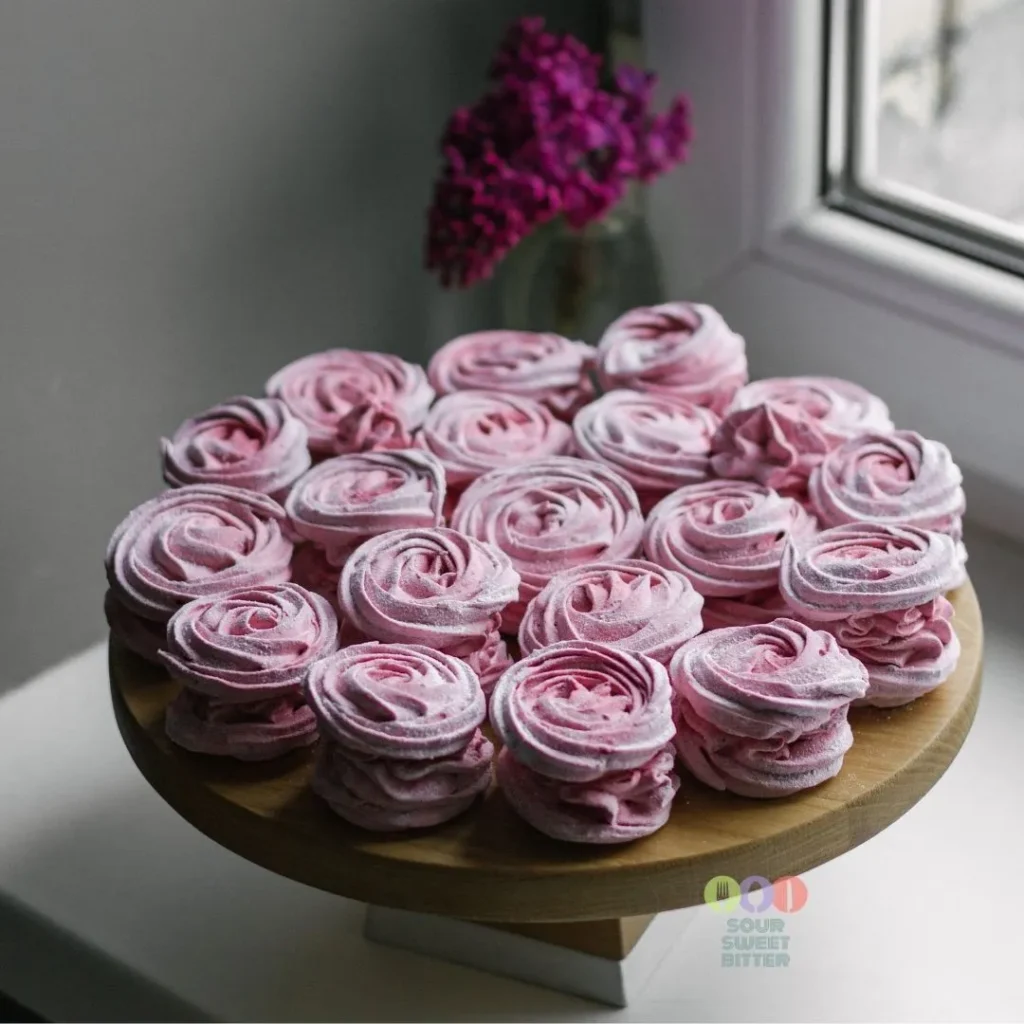Russian Zefir: A Sweet Delicacy with a Rich Heritage
Russian Zefir holds a special place in the traditions and flavors of Russia. This airy, delicate confection has a fascinating history that intertwines with Russian culture, representing elegance and the art of fine sweets. Let’s explore its origins, cultural significance, and the enduring appeal of this delightful dessert.
The Origins of Zefir: A Journey Through Time
The roots of Zefir can be traced back to ancient Greece, named after Zephyrus, the Greek god of the west wind. This deity brought the light spring breeze, a fitting metaphor for the soft, airy texture of this dessert. The confection later made its way to Russia in the 19th century, influenced by French “pâte de guimauve,” and quickly gained a place as a beloved treat.
Originally made with natural fruit purees, sugar, and whipped egg whites, Zefir was set with pectin or agar to achieve its marshmallow-like consistency. The result was a delicately flavored treat, often enjoyed alongside tea or as a light dessert.
Cultural Significance: A Symbol of Russian Refinement
In Russian culture, Zefir is more than just a sweet; it’s a symbol of hospitality and finesse. Traditionally served at tea time, it reflects the Russian appreciation for subtle flavors and the art of confectionery. Its presence at gatherings adds a touch of elegance, often chosen for its beautiful presentation and balanced taste.
During the Soviet era, this dessert became increasingly popular for its simple ingredients and ease of preparation. It became a staple in Russian households, available in flavors like apple, berry, and vanilla. The tradition of making and enjoying Zefir at home strengthened its role in Russian culinary culture.
Zefir Today: A Modern Take on Tradition
Today, Zefir remains a favorite in Russia and beyond, with modern versions introducing fresh twists. While traditional fruit flavors are still popular, contemporary varieties include chocolate-covered options and intriguing fruit infusions to suit diverse tastes. Artisanal confectioners now experiment with natural colors and flavors, maintaining the essence of Zefir while appealing to a new generation.
This dessert’s light texture and gentle sweetness make it a versatile choice, perfect for pairing with tea or coffee. It’s also popular at festive occasions, often presented in elegant boxes or displayed as part of dessert tables at events and celebrations.
Preserving the Legacy
Russian Zefir stands as a testament to the country’s rich culinary heritage, blending ancient inspiration with modern creativity. Its enduring popularity underscores a deep appreciation for quality and tradition in Russian confectionery. As Zefir delights palates worldwide, it carries the warmth and elegance of Russian hospitality, inviting everyone to savor a taste of this sweet legacy.
Discover Traditional Russian Recipes Discover Traditional Asian Recipes You may like this also: Filipino Palitaw
Russian Zefir
Ingredients
Instructions
Prepare the Apple Puree:
-
Peel, core, and slice the apples. Place them in a saucepan with a small amount of water. Simmer until the apples are soft and cooked through.
-
Mash the cooked apples or use a blender to make a smooth puree. Pass the puree through a fine sieve to remove any bits for a smooth texture.
-
Mix the apple puree with 250g of granulated sugar while it is still warm. Let it cool completely.
Prepare the Agar-Agar Syrup:
-
In a saucepan, dissolve the agar-agar in 100ml of water. Let it sit for a few minutes to absorb.
-
Heat the agar-agar mixture on medium heat, then add the remaining 250g of sugar (for the syrup). Stir until the sugar dissolves completely and the mixture becomes thick and syrupy, about 110°C (230°F). Keep it warm while you prepare the egg whites.
Whip the Egg White:
-
In a mixing bowl, whisk 1 egg white to stiff peaks. Once the apple puree has cooled down, fold the whipped egg white into the puree mixture. Keep mixing until smooth and well combined.
Combine the Mixtures:
-
Gradually pour the hot agar-agar syrup into the apple puree and egg white mixture while continuing to whisk. This step is important to achieve the characteristic light and fluffy texture of Zefir.
Shape the Zefir:
-
Transfer the mixture to a piping bag with a large star nozzle. Pipe the mixture onto a parchment-lined baking sheet in swirled mounds. If you don't have a piping bag, you can spoon the mixture into small rounds.
Let the Zefir Set:
-
Allow the Zefir to sit at room temperature for 6-12 hours, or overnight. The outer layer will become firm, while the inside remains soft and fluffy.
Optional Dusting:
-
Once set, you can dust the Zefir with powdered sugar before serving.
-
Your traditional Russian Zefir is ready. Priyatnogo Appetita!
Note
Tips:
- Store Zefir in an airtight container at room temperature for up to a week.
- You can use different fruit purees, such as berries or apricots, to create variations of Zefir.
- The traditional recipe uses agar-agar instead of gelatin, which gives Zefir its unique, bouncy texture.












User Reviews
Its very similar with marshmallows my children love this thank you from argentina 🥰